© 2024 All Right Reserved.
Mid-America Hunting Association
Our Missouri Wetlands do ice over late season far more than through the bulk of the waterfowl season. While not any ice the northern duck hunters experience, the southern hunters may find it requiring additional preparation.
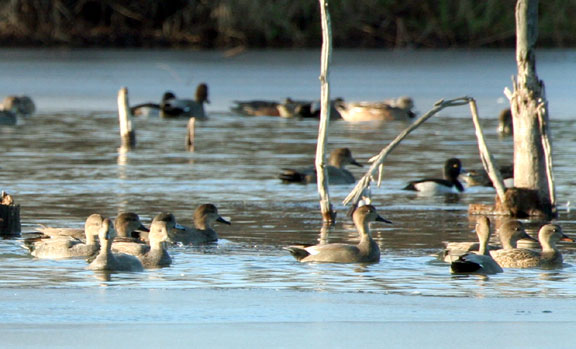

The worst conditions for duck hunting would be dry wetlands. The next worse are low water levels from dry inflow and wells. These pictures are from the 2006 season, our latest dry year of low water levels.
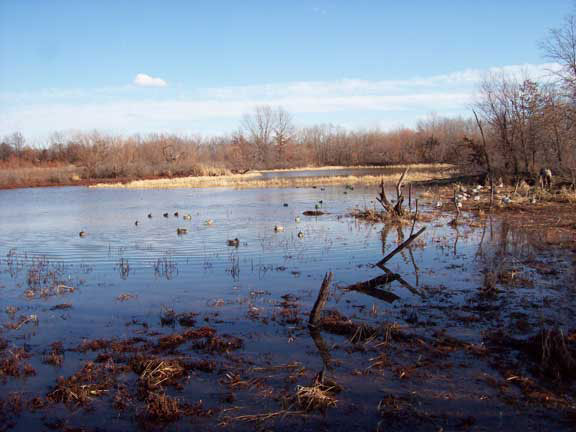
These pictures and the text below are examples of the during season status we supply to our membership on the hunting update page.
This weeks rain brought some water for our wetlands, but a little less than anticipated.
We haven’t scouted the north zone, but assume the rain brought more water in Linn County around blinds one and two.
In the middle zone Blairstown Lake is still not huntable. Winkler’s Lake blind one and two are both huntable. The slough is not completely full, but it is definitely huntable.
Henry B all of the blinds and wade-in area are huntable.
Henry C is about half full. The north and south half of the lake are huntable. The wade-in area is not huntable. There is a large concentration of ducks using some of the surrounding duck clubs, but the competition level is high.
Henry D also picked up some water. There is water close to the west blind, but wade-in hunting is recommended for the west side of the lake.
Cass A did not pick up enough water to hunt, so it is closed for the season, even for scouting.
The ponds in Cass B picked up some water, but nothing drastic. The conditions are close to the week before.
The location references such as “Cass B” refers to our map sheets.
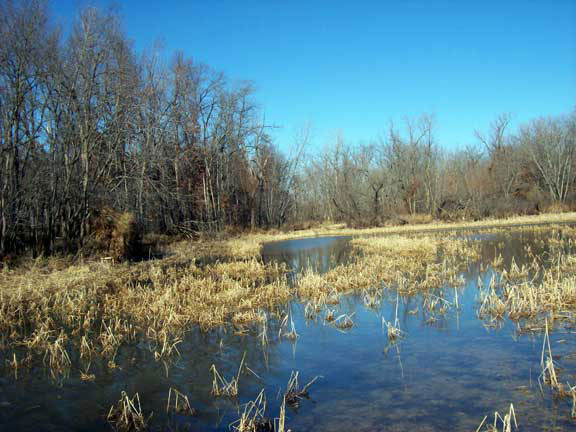
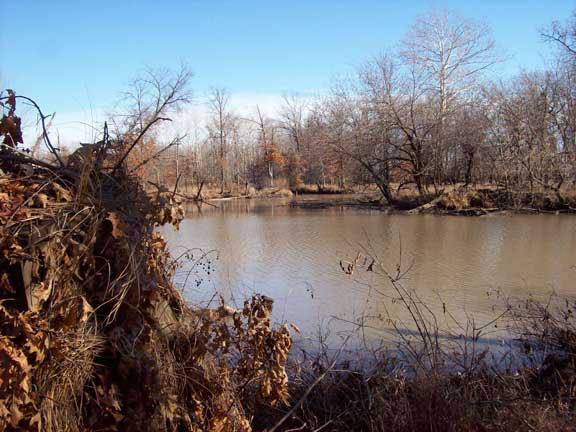
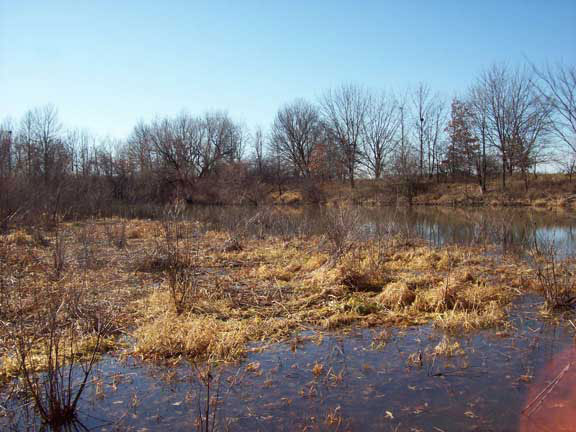
It is a matter of integrity that we do not oversell our organization. Posting such less than favorable pictures of what a low water level year appears like is part of accurately representing the nature of our hunting. Conditions are not always perfect and during low water years such as this one and there is still duck hunting to be had.
During this same year our flooded crop ground with water supplied by an irrigation well and pump and our large northern Missouri wetlands with water supplied by a 12 acre reservoir lake had more than enough water to compensate for these remote wetlands that are more dependent on natural water sources.
There is much work that goes into enhancing natural wetlands to be more effective at attracting ducks and making them hunter accessible. These pictures at the best are just snapshots in to the long days of labor put in by Bruce Johnson and Jon Nee.
A wetlands in an area prone to surge floods has had its bottom bulldozed to remove uneven sentiment collection making the shooting pool bottom smooth. The white pipe is inflow shown in the pictures below. The green new growth is volunteer millet.
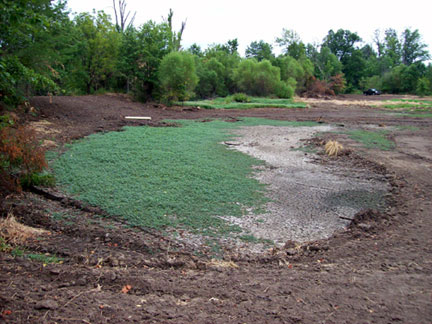
Water level control on this wetlands first draws water from a large creek, floods through several pools with depth controlled by levees with in/out flow control.
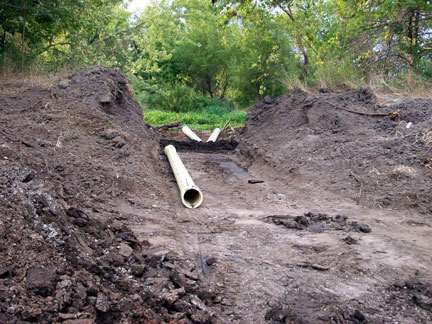
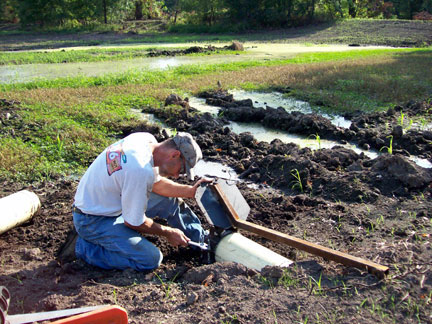
While the concept for each wetlands is the same, that is, duck attracting combination of water and food within a micro flyway that is made hunter accessible, no one system can be informingly applied to all wetlands to make for the right set of conditions. In the case of this wetlands, the levees control the depth and the gated pipe being installed controls the flow to this one pool on this one wetlands comprised of several pools. It is through Bruce an Jon’s combined experience spanning several decades of wetlands building that they can install the right set of mechanics to enhance the maximum potential of those duck attracting conditions. It is also through this website that both Bruce and Jon have receive repeated solicitation for consultation and wetlands development oversight and both refuse all offers. That refusal is based on their intimate knowledge of just how much work it takes and it takes about all they have to give each year to sustain the wetlands the Association has.
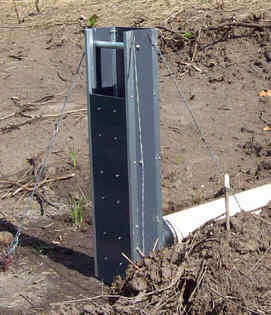
On the same Missouri wetlands as the previous pictures on another pool.
An outflow pipe with removable top slide inserts commonly called a drop log structure although this more modern design does not use logs.
This outflow is flowing into yet another pool and its design of removable 6 inch high inserts allows us to control the water depth on the high side.
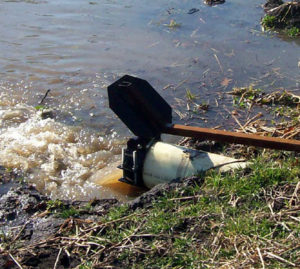 At the end of the season those wetlands to be worked either for levee repair or planting have the water flow set to drain. In the case of this wetlands of several pools we frequently do not drain all pools each year keeping some wet through the year.
At the end of the season those wetlands to be worked either for levee repair or planting have the water flow set to drain. In the case of this wetlands of several pools we frequently do not drain all pools each year keeping some wet through the year.
In the case of this wetlands it are many times the small points that allows maximum return of effort. The draining of this wetlands will allow the fescue to pioneer across the previously worked levees creating a strong surface roots structure and cover to prevent erosion.
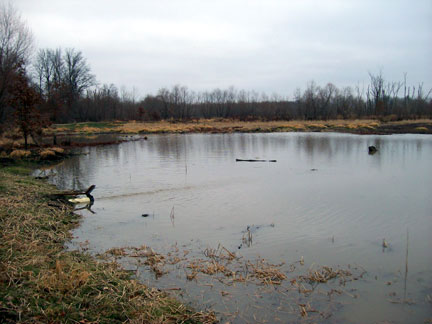
Not all pools on this partilcur wetlands have blinds. To support the many do it yourself pure duck hunters and those with dogs that want to work them from land we have a wade-in area. A key point about this wade in area is that the picture was taken during one of the two driest years we have had in memory.
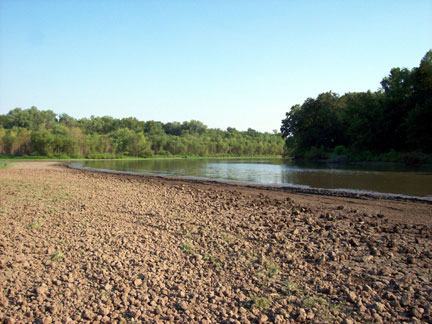 This Henry County Unit C blind 4 facing the northeast (our map reference).
This Henry County Unit C blind 4 facing the northeast (our map reference).
The blind is on an old river channel that we can drain and plant if we desire. This year we left it sit and it dried up for the second time 35 years.
It’s a good blind when the wind is out of the south. It produces many species of small ducks early and good mallard hunting later in the season with an occasional Canada Goose as a bonus.
A wetland that we have progressively done improvements over the past 15 years to enhance the hunting.
We refer to this next blind location as HC #1 facing the south east. The blind is on an old river channel that we can drain and plant at will. This year we planted as much of the lake bed as possible and had adequate rain that made a good stand of millet.
It’s most productive with a north west wind. It produces many species of small ducks early and good mallard hunting later in the season with an occasional Canada Goose as a bonus.
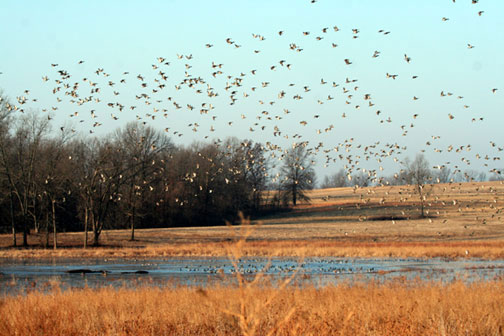
A post season photo from the north east corner of the marsh facing south west. It’s very satisfying watching birds working a wetland that has endless days of hard work put into.
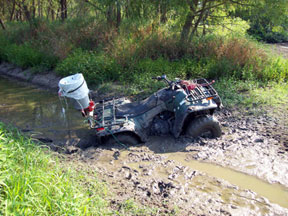 Pictured is the wetlands intake and drain cannel that has since been cleaned out with an excavator to improve and speed up the water flow.
Pictured is the wetlands intake and drain cannel that has since been cleaned out with an excavator to improve and speed up the water flow.
Most people think operating a hunting business is a breeze, but in reality days like these are common when you are working with mother nature.
Due to cleaning the canal, we can now plant the area in the background that is covered with water. Every summer we try to make improvements to increase the quality of surface acres we have to work with.
It’s always been said there are 3 elements to quality hunting habitat and they are food, water and cover.

Many of our wetlands are natural sloughs and bogs with shallow water habitat. Many of these hold water year around, but when a severe drought sets in a few dry up which is prime time to plant feed for the ducks as illustrated by the photos below.
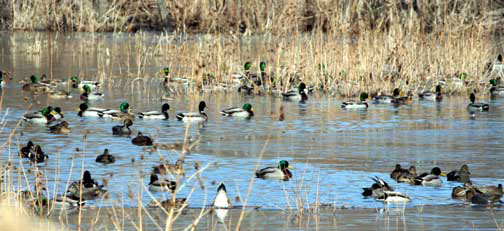
Mallards with a handful of gadwall mixed in.
This is a natural bog in the middle of an area that has been developed for high demand expensive private land duck hunting. At the snap of your fingers, this marsh has been known to fill up out of nowhere, until one day Bruce and Jon discovered the water source. There is a massive log jam on the river a couple hundreds yards south of the property. When the river runs, water builds up and backs into a cut from the river to the marsh. Since the lake bed is 2 to 3 feet lower than the cut or ditch, the water remains in the slough after the water in the cut recedes.
Nine out of ten years the marsh will have natural water, while the adjoining duck clubs are lucky to have water without pumping 3 to 4 years out of ten.
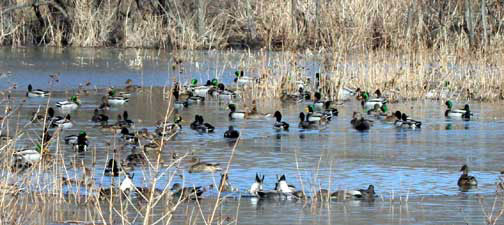
A day when the ducks were in and working MAHA wetlands big time. Days like this are few and far, but you have to be there to make it happen.
The lease on this farm started in 1982 as a deer and quail lease, but after we discovered what we had to work with the work began. At that time, the slough was choked with ash, cottonwood, willow trees and water brush. After two summers of clearing trees and brush by hand, we developed a marsh that has been enjoyed by Association duck hunters for 25 years.
Just as a reminder this entire series is to capture the pre-season work done to ensure good during season duck hunting. There are plenty of during season flooded blind pictures with ducks throughout the website offering plenty a good review of what the wetlands look like during the season. This sampling of pre-season work is offered as decision criteria to use when comparing other duck hunting options.
The pictures may appear deceiving as this shooting pool is well served by chest waders. the water immediately around the blind is typically knee deep.
After the season the inflow gate is closed and the drainpipe opened to ensure the trees do not die and the pool area dry for planting in the late spring/early summer.
The surrounding region is along a low bottoms area that frequently floods with standing pools of waters. the general observation include the ducks fly the creek line feed on the acorns and crop fields as well as seek out these quiet spots for layover.
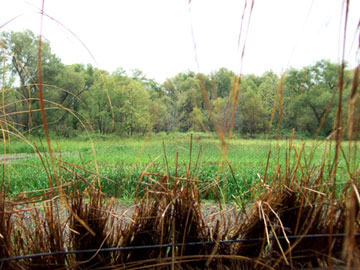
Looking out from inside the blind over the shooting pool area
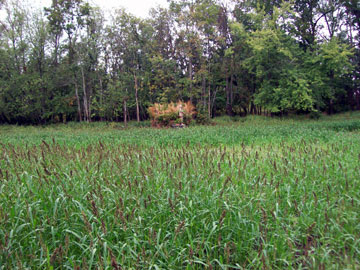
Pot hole duck hunting.
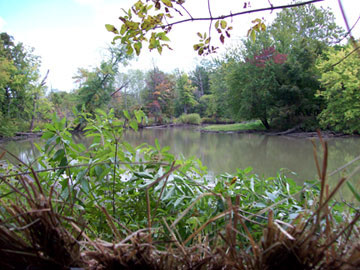
The view from the blind looking out over the shooting pool to that portion of the water the ducks seem to favor from past experience.
The blind immediately after covering it with rippy grass and Pin Oak limbs.
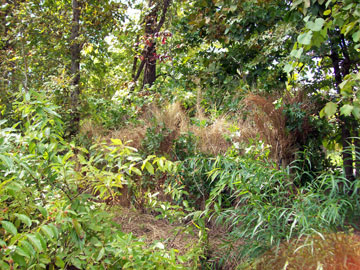
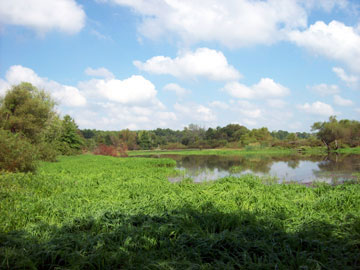
A long range view of the same pot hole. This one does not drain post season and has deep water well out from the blind. The shotgun range shooting pool requires chest waders or dog.
Not all duck hunting is from a blind. We offer layout boat and wade-in areas.
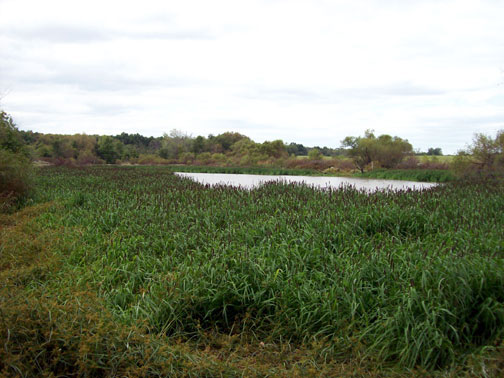
The picture above is a wade in area completely maintained and planted by what an ATV can haul in. The millet shown is just heading out at late summer. By season start all the area covered by green will be flooded. While small appearing in this picture the far ground is a couple of hundred yards away.
What motivates a wade-in or layout boat area over that of a blind placement has several aspects. The first is to grow rippy, cut and haul enough and to cover our current 34 blinds is a good bit of work in both time and effort. The next is the ease at getting into some of the wetlands to get the blind in and then the rippy is too troublesome. Finally, the water dog hunters use wade-in and layout areas for their dogs as much as the blinds. Those without dogs may not seek these areas due to their frequently deeper water and that most do not receive any bottom maintenance for lack of tractor access.
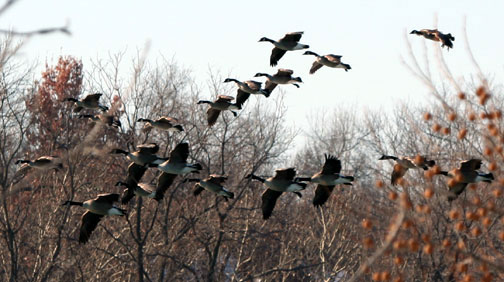
What we like to see second to a flight of greenheads coming in.
© 2024 All Right Reserved.
Mid-America Hunting Association
© 2024 All Rights Reserved
Mid-America Hunting Association